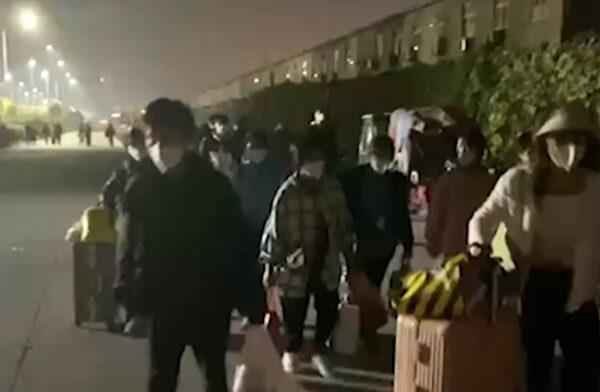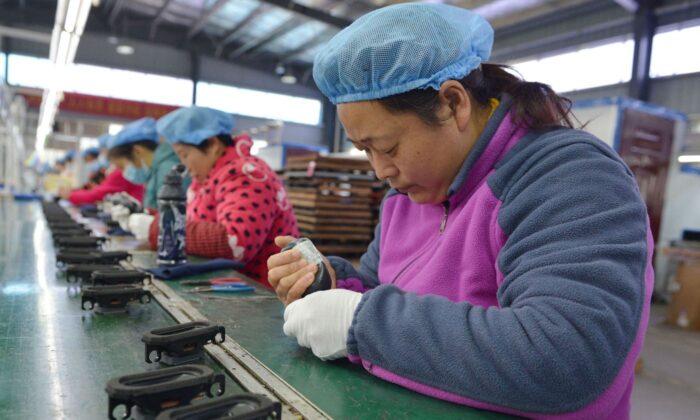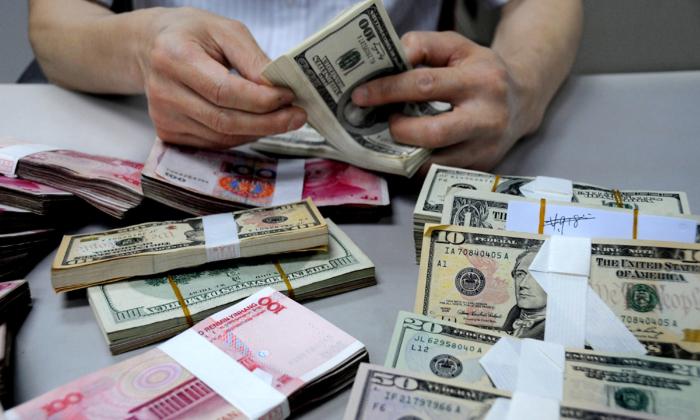China’s manufacturing sector has significantly shrunk under the weight of strict zero-COVID policies and declining international demand.
In November, exports, the main source of foreign exchange for the ruling communist regime, plummeted at a record rate year-on-year.
China’s total exports fell by 8.7 percent to $296.1 billion in November compared to November last year, the largest decline since March 2020, according to data released by China’s Bureau of Statistics.
Global Issues
Central banks in many countries have raised interest rates to curb inflation, which has also curbed demand from the general public.Rising food and energy prices due to the Russian-Ukrainian conflict have also further decreased demand. At the same time, China’s trade with major exporting countries declined sharply year-over-year as tensions between the United States and China over the Taiwan Strait intensified.

Among the major export destinations for Chinese products, exports to the United States in November ($40.8 billion) fell by as much as 25 percent compared to November last year ($54.7 billion). On a year-over-year basis, China’s exports to the U.S. declined for the second consecutive month in November, falling 14 percent compared to October ($47 billion).
Meanwhile, China’s exports to the EU in November (US$44.8 billion) fell by 10.6 percent compared to November last year ($50.1 billion). Among them, exports to Germany, the Netherlands, France, and Italy all dropped year-on-year. In addition, exports to Japan, Korea, and Taiwan fell by 5.6 percent, 12 percent, and 20 percent, respectively, in November this year.
Cell Phone Exports Drop
Among them, cell phones, which have been China’s main export product, have dropped 11.7 percent year-on-year in the first 11 months of this year. From September to November this year, China’s monthly cell phone exports declined from 79.15 million units to 73.68 million units and then to 66.57 million units. In the three-month period, there was a total drop of 16 percent.In October, Foxconn, the world’s largest iPhone manufacturer, put its Apple cell phone assembly plant in Zhengzhou City, Henan Province, under closed management, in response to local pandemic control, resulting in a COVID outbreak that caused thousands of workers to flee. Violent protests last month marked an escalation of discontent since Foxconn imposed the lockdown.

Apple issued a statement on Nov. 6 this year saying that it expected to ship fewer high-end iPhone models than expected due to the disruption of production at the plant as a result of China’s pandemic control.
The Chinese Communist Party’s (CCP) extreme zero-COVID policy and repeated lockdowns have resulted in transportation and supply chain disruptions, forcing factories to shut down or reduce production on occasion, causing losses to China’s manufacturing industry.
In addition to cell phone products, China’s exports of automatic data processing equipment and components (including tablets, laptops, CPUs, storage components, LCD monitors, etc.), another major export category, decreased by 4.2 percent in the first 11 months of this year compared to the same period last year ($218.4 billion).
Sending Companies to Overseas Trade Exhibitions
Many Chinese manufacturers are facing a reduction in overseas orders and cancellations due to rising sea transport costs and shrinking demand in overseas markets.Facing such decline, the CCP instructed China’s main exporting provinces to organize enterprises to go abroad to participate in exhibitions and trade talks in order to promote their products.
At a Politburo meeting on Dec. 6, the CCP’s top authorities explicitly asked provincial officials to find ways to reduce the impact of pandemic prevention on China’s economy and to encourage more Chinese enterprises to go overseas to attract buyers.
According to the state media, in recent months, Guangdong, Zhejiang, Sichuan, Jiangsu, and other major Chinese manufacturing provinces have sent delegations overseas, and with hundreds more in planning, covering Europe, the United States, Japan, Korea, ASEAN, the Middle East, and other important overseas markets. Provincial authorities chartered and subsidized flights for overseas exhibitors in order to boost China’s exports.






